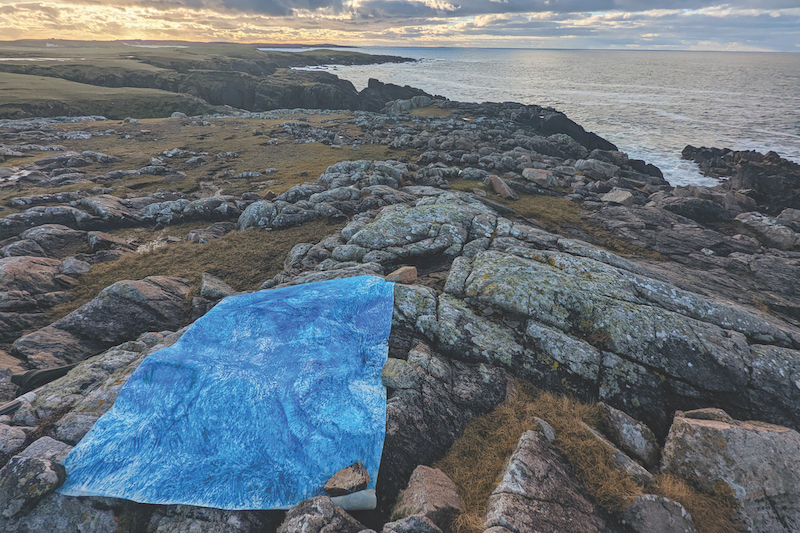Describing herself as an “ecological artist”, Laura Donkers works to capture a sense of place with her delicate portraits of nature. Using the process of frottage or rubbing, the artist seeks out the wild corners of the landscape and builds delicate snapshots of texture and atmosphere.
Her works are created in-situ, where delicate sheets of Japanese paper are worked while pressed against rocks and surfaces. These pieces are then left for hours or sometimes days to draw in the wind, rain and sunshine, capturing the essence of their subject. Nature provides Donkers with an inexhaustible resource for new compositions and arrangements, which she then transports to gallery walls.
At the heart of Donkers’ work is a respect for the environment, and an understanding of its fragility. All of her materials are bought as needed, and are of high quality so that they will be durable against the elements, without leaving any residue or trace of the artist’s presence. Sustainability for the artist is “understanding that the materials and methods used in your practice will not compromise future generations, and that the messages in your work are sincere”.
The artist captures the vitality of the natural world, expressing its significance without compromising her subject. Her practice is as delicate as her works: “It helps me to maintain a degree of humility to remind me of my place in the ecosystem.”

